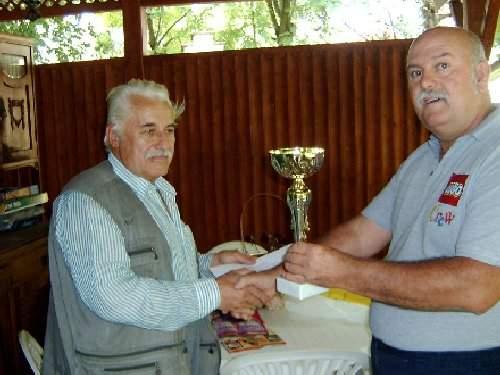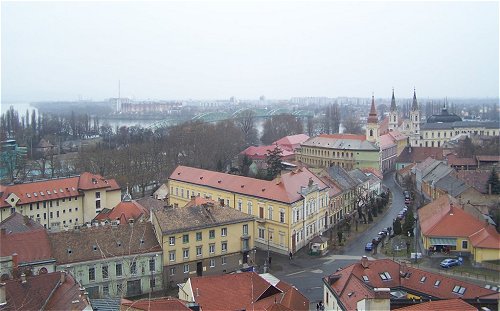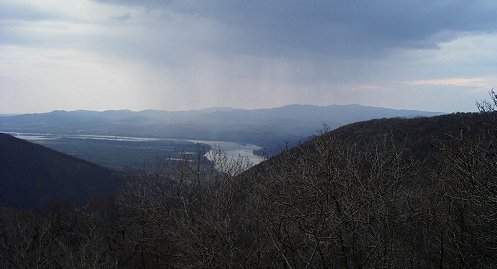|
Info
|
|
|
| U T C |
| DANUBE
DAY
DANUBE
RIVER HAM RADIO ACTIVITY
The
Danube Day
The International Commission for the
Protection of the Danube River has
declared June 29, each year to be the INTERNATIONAL
DANUBE DAY. Official name of the event: INTERNATIONAL
DANUBE RIVER HAM RADIO ACTIVITY
Rules - (magyarul) 
Examples of settlements bordered or crossed by Danube river: DL: ULM, REGENSBURG, PASSAU OE: LINZ, KREMS, WIEN OM: BRATISLAVA, KOMARNO, STUROVO Multiplier: None Throphies: The highest score will be awarded with a special CUP. Furthermore top 3 scores will be awarded with a special Danube Day Activity Certification. 
All contacts with Danube stations count and valid for DABUBE AWARD. Please remember that all valid Danube contacts (any time) count for DABUBE AWARD that is issued on application after having 100 stations alongside Danube River. Contacts are valid for the award since June 01, 2007 Log/AWARD application instructions: Activity logs and/or applications for the DANUBE AWARD are to be sent to: Mr. Jozsef Szekely HA7VY H-2011 Budakalasz Kinizsi u. 5. Hungary or via email: HA7VY as text attachment till July 30, in the actual year as to activity logs concerned. Your standard log extract (or spreadsheet) will highly be appreciated. Final scores will also be published here. Cup and certificates will be mailed to the winners. Please attach 2 EUR or equivalent in IRC to only Danube Award application for covering cost of postage. More details and information can be available here. Some
words about Danube
The Danube, one of the world's great
rivers stretches for 1800 miles from a spring in the
Black Forest of southern Germany near Donaueschingen
to the Black Sea. It runs east through Regensburg
and Passau, Germany, to Linz and Vienna, Austria and
on to Bratislava, Slovakia, then continues east to
Budapest, Hungary where it abruptly heads south to
Mohacs, Hungary. It is then joined by the Drava and
again turns in an easterly direction to Belgrade,
Serbia where its volume is increased by the Sava
River. It then continues east, forming the border
between Romania and Bulgaria, eventually creating a
massive delta which now includes parts of Russia,
Romania and Bulgaria, before emptying into the Black
Sea. The delta is a very important bird sanctuary
and breeding ground. 
On its banks you'll still see women washing clothes, fishermen's huts, stock and geese being watered, crumbling castles, river hamlets and village scenes, not to mention urban bridges, promenades and shipping quays. You'll also see Roman remains (the Rhine, Danube and Euphrates rivers defined the borders of the Roman Empire), Austrian/Hungarian-Turkish-Balkan forts and palaces, Balkan army maneuvering and a large hydroelectric dam where once the "iron gates" (rapids) caused transportation problems, but bucolic scenes still predominate. Between urban areas you can still see bits of "old Europe" -the whole historic panorama. You can even imagine the first crossing of the river by the Goths in AD 377, the beginning of the end of the Roman Empire. The river's former wild nature has been subdued and tamed but it can still assert its authority on occasion, flooding river towns and villages and changing channels. 
|
| LINKS
HAMLOG - log search You have to log in to use or search. My log does not contain recent contest QSOs. SPAR Society for the Preservation of Amateur Radio is an international group activity to preserve ham radio for the future. Haros Radio Club The Club where I belong to (Hungarian mainly). HAmatőr Forum The most popular Hungarian ham forum for the time being (Hungarian) Contest Calendar (weekly) Actual contest information week by week. IARU The International Amateur Radio Union - The world organization of the amateur radio representation as ITU consultant. Hobby Rádió Online retro rádió, rádióamatőr témák is (Hungarian). |
CTC # 761 GACW # 802 CDX Member of SPAR